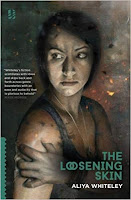This is a comprehensive study of the bits of a book that surround the main text - the "paratext" of (to list them): introductions; dust jackets; frontispieces; title pages; imprints, imprimaturs, and copyright pages; tables of contents; addresses to the reader; acknowledgements and dedications; printers' ornaments and flowers; character lists; page numbers, signatures, and catchwords; chapter heads; epigraphs; stage directions; running titles; woodcuts; engravings; footnotes; errata lists; indexes; endleaves; and blurbs.
Much of this study of paratexts is metatextual. Several chapter headings are arranged to reflect their content, such as the errors corrected in the one for "Errata lists". Other chapters do similar in their texts, such as when "Addresses to the reader" talks to us directly. There's a lot of history - the book, publishing, laws pertaining to copyright - and it is nerdishly fascinating, teasing out the evolution of elements we so often take for granted.
Almost immediately, I delighted in the synonyms given for "Introduction":
"Prologue, dedicatory epistle, preface, textual note, address to the reader, isagoge, proem, preamble, exordium" (p. 6)
Over the page and there's another, as we're told of Alfred the Great's,
"preface - or fore-spræc; fore-speech - to be included before his own translation of Pope Gregory's Pastoral Care" (p. 8).Or there's the three books that, to dodge punishments for printing dangerous ideas, claim in thier indicia to have been published in Utopia:
"Godwin, Nuncius inanimatus (1629), STC 11944, Folger Shakespeare Library ... John Taylor's Odcombs complaint (1613), STC 23780 and A copie of quaeries, or a comment upon the life and actions of the grand tyrant and his accomplices (1659)."
(I'm giving a talk on dystopia next week, for which this is perfect!)
There's something thrilling about the detective work described on p. 119 in spotting the same decorative fleuron printing blocks used in different books, which can be used to identify the same printer (who might be named in one volume but not another). It's even possible to spot the aging of blocks from one volume to another, and to use the number of so-called "wormholes" eaten into them by beetles to build up a chronology - the more holes eaten, the later the block was used. In fact, southern European beetles make bigger holes than their northern counterparts, so the location of the printer can also be deduced! (This, a footnote tells us, comes from S Blair Hedges' brilliantly titled, "Wormholes Record Species History in Space and Time", Biology Letters 9 (2013).)
Tiffany Stern's chapter on "Stage directions" also captivated me. She argues that the directions in book versions of plays published in the time of Shakespeare were rarely the work of the playwrights, and can even contradict dialogue. There's stuff about the way stage directions can often be for the benefit of the reader rather than for staging the production - directions that can't be acted but which add colour and character. I'm fascinated by the actors cited who were schooled to always ignore the directions, and Samuel Beckett's efforts to insist that his were adhered to.
I find myself reaching for the next book to read, scouring it for its paratext to better understand its context.











































